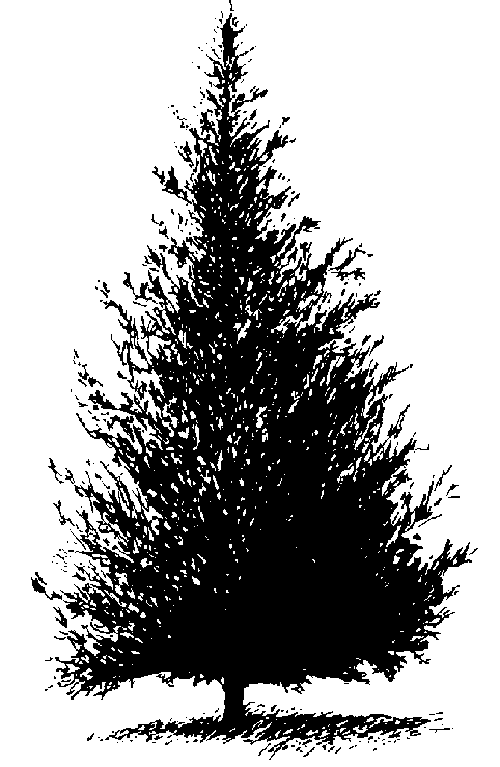Larch Trees for Immune Defense

(The FDA has not evaluated
this information. This information is
not intended to diagnose, treat, cure, or prevent any disease. If
you have a specific health condition consult a qualified health professional. Arabinogalactan is a nutritional
supplement, NOT a drug.)
-
Arabinogalactan (AG).
-
AG is a naturally occurring carbohydrate.
-
AG is an all-natural extract from the heartwood of the larch tree.
TOP
AG is found in most plants.
AG is found in many foods derived from
plants.
AG is found in foods like lettuce, spinach, tomatoes, peaches,
pears, and radishes.
AG is found in Echinacea, mistletoe, ginseng and other medicinally
important plants.
AG
is present in our diet.
AG is naturally present in a healthy diet.
AG may be why "an apple keeps the doctor away."
The
FDA approved use of AG as a food additive in the
1960's.
TOP
-
AG could be damaged by cooking at temperatures over 140 degrees F.
-
AG cannot work for your immune defense if it is damaged by cooking.
-
It is no longer bioactive if damaged by cooking.
-
Baking and AG.
-
Wheat bread may not contain the same amount of bioactive AG you find in raw foods.
-
Baking can damage AG.
-
Pasteurization and AG.
-
Pasteurized milk or juice may not contain the same amount of bioactive AG you find in raw foods.
-
Pasteurization can damage AG.
-
Safe raw foods and larch tree AG.
-
Raw
fruits, carrots, radishes, lettuce, spinach, and coconuts contain bioactive AG.
-
AG from the larch tree is bioactive and concentrated through the extraction process.
TOP
-
AG and the complement system.
-
AG modulates the complement system.
-
The complement system is an essential part of the body's immune
defense.
-
AG and cytokines.
-
AG can increase the release of various cytokines.
-
AG increases the release of interferon gamma (IFN
gamma), tumor necrosis factor alpha (TNF alpha), interleukin-1 beta (IL-1beta)
and interleukin-6 (IL-6).
- AG and natural killer
cells.
-
AG increases the production of natural killer
cells.
-
Natural killer cells help kill microorganisms that invade the body.
-
AG and macrocytes.
-
AG activates macrophages.
-
Macrophages attack viruses and other invading microorganisms.
-
Macrophages help the body defend against cancer.
-
AG and Echinacea.
-
AG is two to three times more powerful as an immune enhancer than Echinacea.
-
Purified AG can be twice as effective as Echinacea in stimulating
the production of macrophages.
-
Echinacea is used as a cold and flu phytochemical.
-
AG is the carbohydrate responsible for Echinacea's stimulation of the immune defense.
TOP
-
AG and attachment of invading bacteria.
-
AG keeps bacteria from attaching to your cells.
-
If bacteria can attach to your cells then they can invade or destroy your cells.
-
AG keeps the bad bacteria from finding a home.
- AG and good bacteria (digestive flora).
-
AG increases good bacteria, such as lactobacillus and bifidobacteria found in the digestive tract.
-
The good bacteria can compete with the bad bacteria and "drive them
out."
TOP
Chintalwar G et al. (1999)
An immunologically active arabinogalactan from Tinospora cordifolia.
Phytochem 52:1089-1093.
Cho JY and Kim SG (1997)
Magnesium binding of gum arabic, locust bean gum, and arabinogalactan.
Food Chem 59:87-93.
Fuller R and Gibson GR
Modification of the intestinal microflora using probiotics and prebiotics.
Scand J Gastroenterol 222:28-31.
Ingelbrecht JA et al. (2001)
Behavior of Triticum durum Desf. arabinoxylans and arabinogalactan peptides during industrial pasta processing.
J Agric Food Chem 49:1783-1789.
Kelly GS (1999)
Larch arabinogalactan: clinical relevance of a novel immune-enhancing
polysaccharide.
Altern Med Rev 4:96-103.
Kind LS et al. (1970)
Enhanced vascular permeability induced in mice by larch arabinogalactan.
Immunol19:799-807.
Luettig et al. (1989)
Macrophage activation by the polysaccharide arabinogalactan isolated from plant cell cultures of Echinacea pururea.
J Natl Cancer Inst 81:669-675.
Ohtani K et al. (1987)
Sanchinan-A, a reticuloendothelial system activating arabinogalactan from sanchi-ginsenf (roots of Panax notoginseng).
Toxicol Letter 53:166-169.
Prescott JH et al. (1995)
Larch arabinogalactan for hepatic drug delivery: isolation and characterization
of a 9 kDa arabinogalactan fragment.
Carbohydr Res 278:113-128.
Robinson RR et al.(2001)
Effects of dietary arabinogalactan on gastrointestinal and blood parameters in
healthy human subjects.
J Am Coll Nutr 20:279-285.
Salyers AA (1977)
Fermentation of mucin and plant polysaccharides by strains of Bacteroides from
the human colon.
Appl Environ Microbiol 33:319-322.
Salyers AA et al. (1981)
Digestion of larch arabinogalactan by a strain of human colonic Bacteroides
growing in continuous culture.
J Agric Food Chem 29:475-480.
Stein GM et al. (1999)
Influences of polysaccharides from Viscum album L.on human lymphocytes, moncytes and granulocyles in vitro.
Anticancer Res 19:3907-3914.
Vince AJ et al. (1990)
The effects of lactulose, pectin, arabinogalactan and
cellulose on the production of organic acids and metabolism of ammonia by
intestinal bacteria in a faecal
incubation system.
Br J Nutr 63:17-26.
Wagner H and Jordan E (1988)
An immunologically active arabinogalactan from Viscum album "berries.".
Phytochem 27:2511-2517.
Zhang et al. (1996)
Complement activating galactan chains in a pectic arabinogalactan (AGIIb-1) from the roots of Angelica acutiloba Kitagawa.
Carbohydr Polym 31:149-156.
TOP
MEND :
Larch Trees for Immune Defense
created by Carl R. Hansen, Jr. M.D.
last modified: September 17, 2001
4601 Excelsior Boulevard, Suite 300, St. Louis
Park, Minnesota USA Phone: 952-920-8801, Fax: 952-920-2121
Under the copyright laws, this document may not be copied, photocopied, reproduced, translated, or reduced to any electronic medium or machine readable form, in part or in whole, without the prior written consent of Carl R. Hansen, Jr., M.D., MEND.
Copyright 2001 Carl R. Hansen, Jr., M.D. MEND, 4601 Excelsior Blvd., Suite 300, St. Louis Park, Minnesota, USA 55416
URL:
https://www.mend.net/immune/larch.html
|

